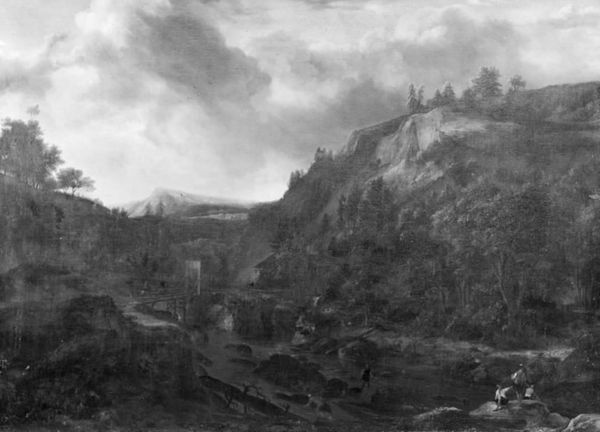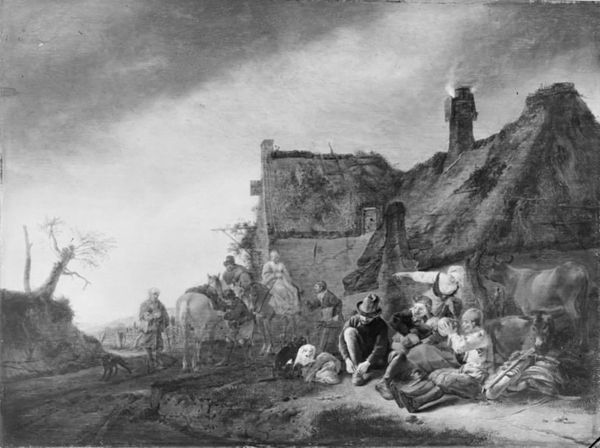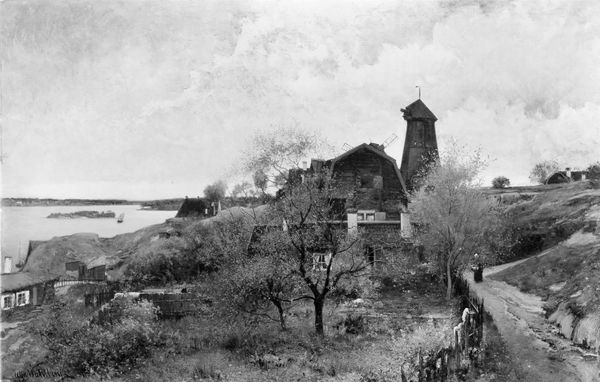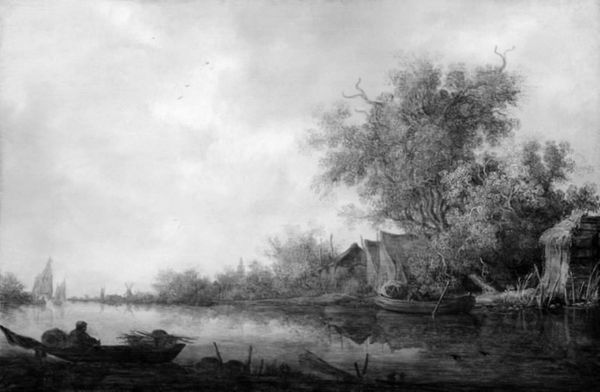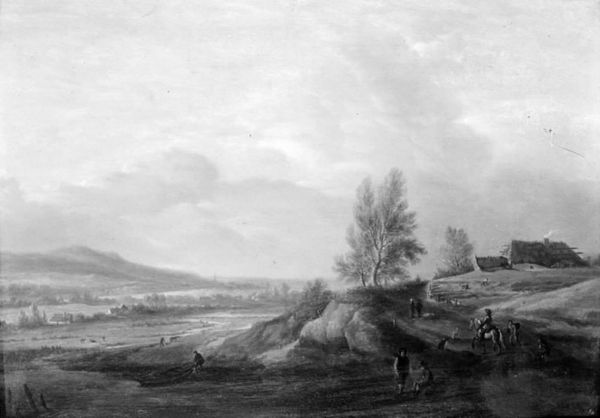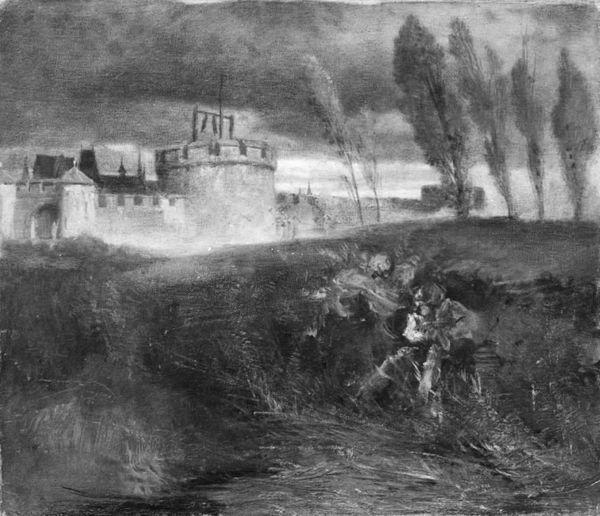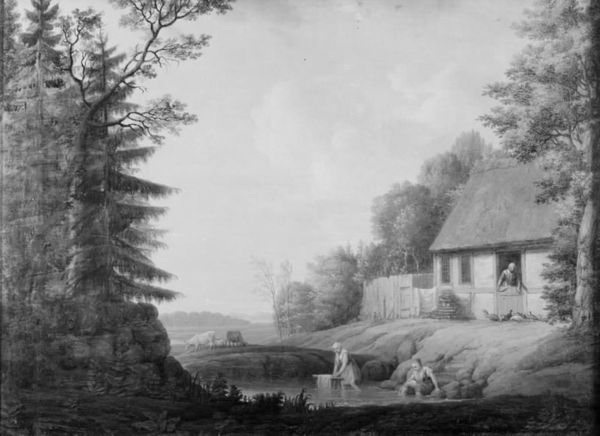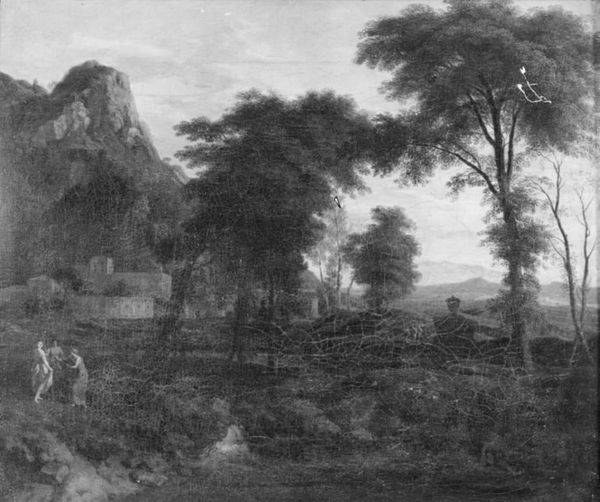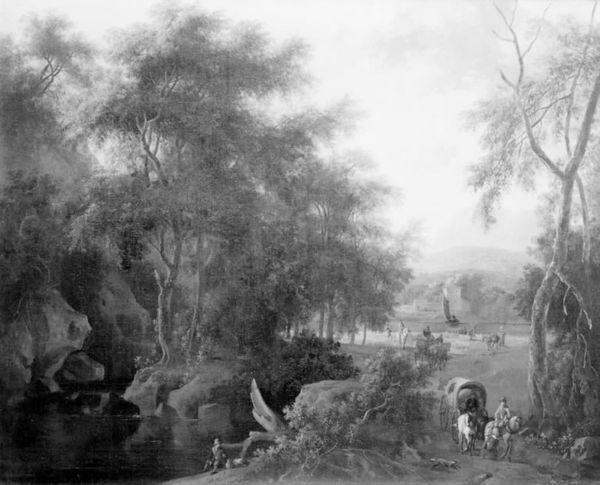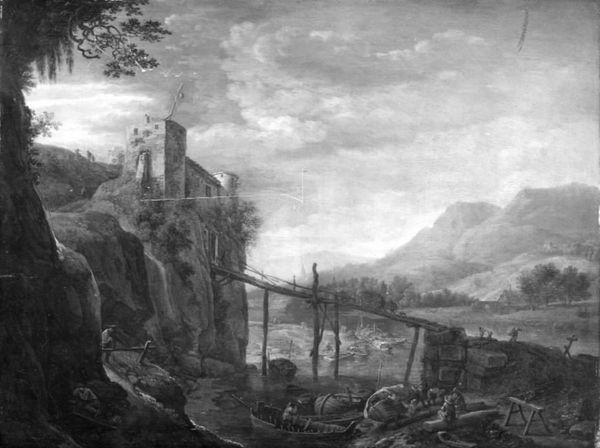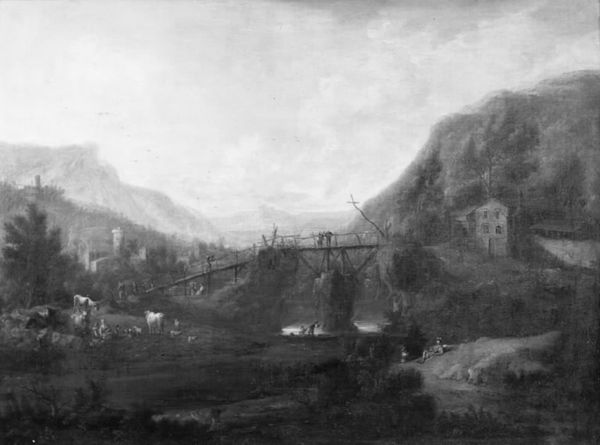
oil-paint, canvas
#
oil-paint
#
landscape
#
rural
#
canvas
#
romanticism
#
genre-painting
#
realism
Dimensions: 56 cm (height) x 72 cm (width) (Netto)
Curator: This is Christian Ezdorf's "Swedish Landscape," painted sometime between 1816 and 1851. It offers a fascinating glimpse into the romantic yet realistic depiction of rural Sweden during that period. Editor: My first impression is how much the painting emphasizes the texture of things: the rough rock face on the left, the coarse smoke billowing out from what looks like a mill or kiln. There’s a real grittiness to it all. Curator: Absolutely. The composition speaks volumes about the changing Swedish landscape. While it flirts with the picturesque qualities that romanticism embraced, you see industry encroaching on nature's domain. Consider how the smokestack and dark mill buildings contrast with the trees and grazing livestock. Editor: I’m drawn to that very industrial aspect. What materials are we looking at here? That stone kiln and what appear to be heavily timbered buildings indicate a substantial investment in extracting something, possibly iron ore, judging by the setting. Curator: Quite possibly. Ezdorf masterfully highlights this juxtaposition within a developing class structure, where the traditional agrarian life is slowly being overtaken by a new industry that provides both opportunity and potentially some sort of visible social stratification based on where labor might exist within the industrial operation of such building. Editor: It does invite questions about the workers and their relationship to the landscape and labor itself. Do we know much about Ezdorf’s views on this? I'm interested to understand if there's a political commentary baked into the materiality of this. Curator: Ezdorf, aligning himself with the Realism movement, chose not to editorialize the political impact directly. However, by documenting this burgeoning interplay between agriculture and industrial encroachment on canvas with oil paints, his view seemed inclined on exploring realism as truth rather than romantically hiding it as artifice. Editor: This focus brings such intriguing nuances to an understanding of labor within art, rather than it being an almost academic composition of a painting. Ezdorf has laid bare the realities of early industrial impact. It really gives pause about how art imitates life…or calls attention to it, at least. Curator: A truly captivating way to view it, drawing a modern audience back in time, connecting to the materiality within societal landscapes that helped mold modern Sweden. Editor: Absolutely, a powerful way to understand social changes through paint.
Comments
No comments
Be the first to comment and join the conversation on the ultimate creative platform.
